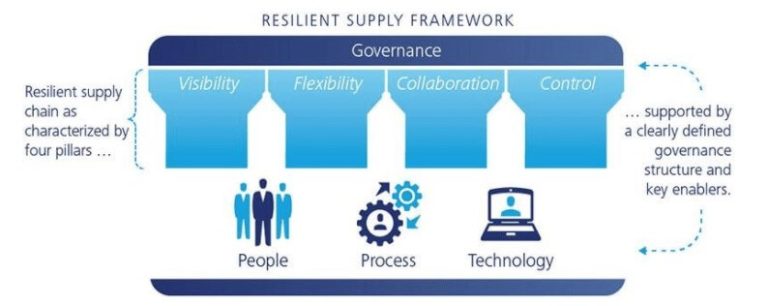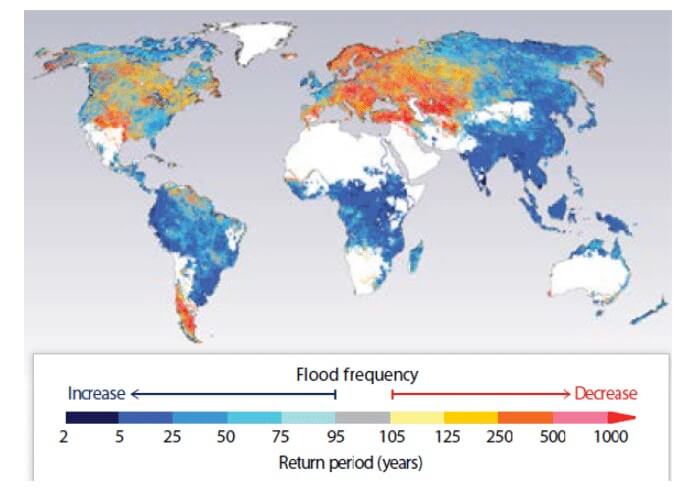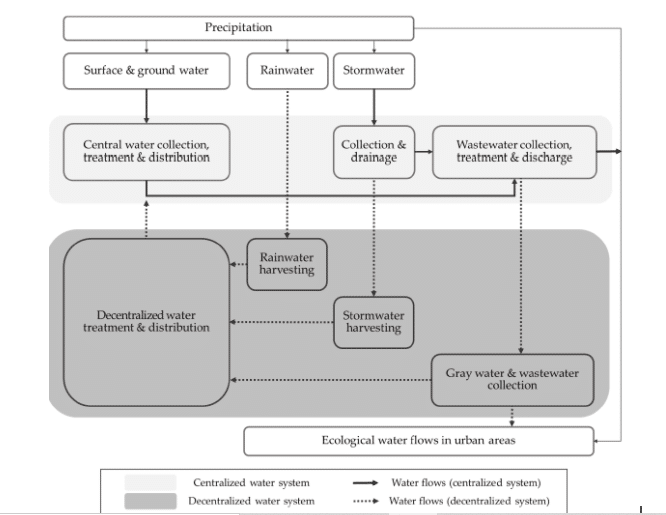It consists of a continuous cycle of planning, adaptation, as well as response and recovery actions after a hazardous event[1] like shown in Figure 1. The term goes beyond statistical probabilities, envisioning the worst case scenarios and considering them as important factors in adaptive planning.

When it comes to water systems, resilience talks about the ability of water managing organizations to design, maintain, and operate water systems in a way that limits the consequences of hazardous events on the water infrastructure. It also involves a quick response and return to normal supply of safe water[1]
The term attends to the interplay between disturbances, reorganization, sustainability and development, and adaptive capacity. Yet, it also encompasses learning and innovation[2].Thus, by updating the methods and variables and integrating fresh principles, the risk of service interruption due to hazardous events is minimized.
Figure 2 shows the different components of a resilient water supply system.

Our current water distribution systems were designed around 50 years ago, according to the climatic conditions, population density, water supply and somehow certain rainfall and dry seasons of that time[4]. Yet, because of climate change, extreme weather events began to happen with major frequency, one of the reasons why old-fashioned water systems tend to fail when it comes to hazardous climatic events.
Data shows a raise in the frequency of extreme weather events over the past 36 years, and that trend is expected to remain still for the coming years. Figure 3 shows this situation taking flooding as an example.

In this sense, by setting a new standard in which extreme weather events are more frequent and quite possibly of higher magnitudes, a new approach in the water supply chain must be adopted for the years to come.
Amongst others, urban areas, agriculture, and the industry sector are subject to similar climate change effects water-wise. Discharge of wastewater pollutants, contamination of fresh water resources, and scarcer rainfall are a common fact among them. Urgent is the adoption of alternative water harvesting options, enhanced use of water, wastewater retrieval and reuse throughout all the supply chain, as well as the implementation of good water management practices in every sector.
Despite the amount of research being dedicated to the hydrological cycle, it is almost impossible to accurately foresee the occurrence and magnitude of extreme weather events. Thus, considering the integration of different climate models into water engineering could aid in structuring more resilient systems.
The most adequate alternative to develop resilient water systems is by analysing the different perspectives and scenarios and moving from a “probability” to a “possibility” mind-set. A resilient approach overpasses risk strategies in the sense that the former targets an adaptive planning scheme adjusted to the increasingly complex, non-linear systems and uncertainty features, characteristic of future weather scenarios[2]
This new method, also based on flexibility and adaptability, would create opportunities for a sturdier water network with extended ability to cope with the consequences of climate change[5].
To ensure flexibility and adaptation, systems must be designed by interlinking both internal and external factors. This strategy makes it possible to increase the ability to transfer spare capacities among the water system components, generating more options for alternative service paths[4].
Flexibility and adaptation also includes water sources diversification, which can be achieved by integrating a mix of local water resources to diminish the vulnerability associated with weakening of the same in time. Part of this strategy also comprises the ability to run on multiple technologies over time. Lastly, installing spatially distributed infrastructure to avoid degradation or failure[4] also contributes to a sounder and more resilient system.
Decentralized water infrastructure refers to small or medium-sized water infrastructure that feeds from available and local water resources. These systems operate independently or combined with existing water infrastructure. Decentralized systems nourish from wastewater recycling, grey water, rainwater and storm harvesting infrastructure, among others[4].
These smaller-sized systems are not only applicable for urban water purposes, but they make an ideal alternative for small or rural communities with diverse but still not correctly seized water sources. The comparison between centralized and decentralized systems are shown in Figure 3.

Our team of engineers at BOSAQ understand the role of optimal water management in the transition towards more resilient systems. We aim to promote the sustainable exploitation of water resources by considering current and future conditions to come up with the most optimal drinking water management strategy for governments and their communities and NGO’s to ensure a decentralized, safe and stable water supply.
[1] Office of Research and Development, ‘Systems Measures of Water Distribution System Resilience’, Environmental Protection Agency, United States, Jan. 2015. Accessed: Aug. 05, 2020. [Online]. Available: https://cfpub.epa.gov/si/si_public_file_download.cfm
[2] K. de Bruijn, J. Buurman, M. Mens, R. Dahm, and F. Klijn, ‘Resilience in practice: Five principles to enable societies to cope with extreme weather events’, Environ. Sci. Policy, vol. 70, pp. 21–30, Apr. 2017, doi: 10.1016/j.envsci.2017.02.001.
[3] K. M. & J. O’Dwyer, ‘From Risk to Resilience: Using Analytics & Visualization to Reduce Supply Chain Vulnerability - Supply Chain 24/7’. https://www.supplychain247.com/article/from_risk_to_resilience_using_analytics_visualization (accessed Aug. 01, 2020).
[4] N. G. Leigh and H. Lee, ‘Sustainable and Resilient Urban Water Systems: The Role of Decentralization and Planning’, Sustainability, vol. 11, no. 3, Art. no. 3, Jan. 2019, doi: 10.3390/su11030918.
[5] Department of Public Health, Environmental and Social Determinants of Health (PHE), ‘Climate-resilient water safety. Managing health risks associated with climate variability.’, World Health Organization, Geneva - Switzerland, 2017. [Online]. Available: https://apps.who.int/iris/bitstream/handle/10665/258722/9789241512794-eng.pdf;jsessionid=F0966F5EB43C0F8F0D2A11A8846F1832?sequence=1.